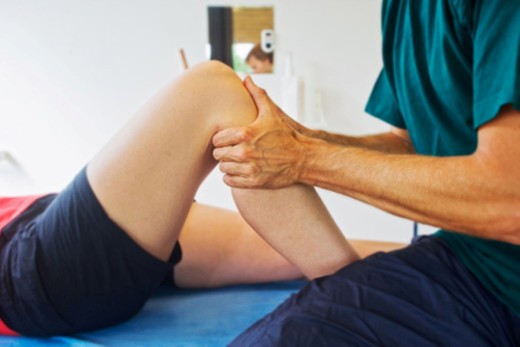
Physiotherapy
Often, physical therapy is the only exercise you will be allowed after your surgery, so take advantage of it for your mental and physical well-being. You may be asked to do therapy by yourself or work closely with 1 therapist as part of your rehabilitation plan.
Either way, make sure to clarify your recovery path and stay positive through the exercise process. This article will tell you how to use physical therapy to recover from surgery.
Method 1 of 2: Planning Post-Surgery Physical Therapy
1. Meet with your surgeon to discuss rehabilitation before you go in for surgery. Ask about what exercise you should be having 1 week, 1 month and 3 months or longer after your surgery. Identify short term goals, such as range of motion improvement, and long-term goals, such as a reduction in pain or an increase in overall mobility.
2. Call your insurance company before your surgery to see how many physical therapy sessions they will cover. They may cover anything from 10 to unlimited sessions, but it will help your plans and peace of mind to know how long they will pay for your treatment. Find out what physical therapists are in your network.
3. Get recommendations for exceptional physical therapists from your doctor. The surgeon may know of people with expertise on treating people with your condition. In which case, you may try to see if your insurance covers 1 of these therapists.
You may need to make a decision as to whether you will go to an specialized physical therapist who is not in your network and a general therapist who is covered by insurance. Call the out-of-network therapist before your surgery to see what rates and discounts are available. Make the decision based on your priorities and what you can afford.
4. Buy the necessary equipment, or get a prescription from your doctor. Many surgeries require a walker, cane, resistance bands and more. Ask your physical therapist and doctor what you will need before you leave the hospital.
Method 2 of 2: Performing Post-Surgery Physical Therapy
1. Have several physical therapy sessions when you are in the hospital, if possible. Physical therapists often treat new surgery patients once or twice per day. Try to be as awake, alert and positive during these sessions.
Ask a friend or family member to take notes about exercises and recommendations during your physical therapy sessions. You may be on medication that doesn’t allow you to focus or have extensive pain, and it will benefit you to take away as many notes as possible.
2. Ask your physical therapist or doctor to give you descriptions of the exercises that are required of you, diagrams and the expected outcome of each exercise. For example, you should know what exercises are essential to your range of motion and others that affect general mobility.
3. Keep track of the overall effect of the therapy on your body. Keep a journal of your pain, progress and questions so that you can consult the physical therapist or surgeon at post-operative visits.
Stop your exercise immediately if you feel your incision is not protected, if you have excessive swelling or if you have extreme pain. A little pain and swelling is standard for recovery exercise; however, your therapist can help you to distinguish what is normal and what isn’t.
4. Stay positive. There is a mental portion of physical therapy. Your success depends on your commitment, desire and optimism that you will recover to a healthy, mobile state.
5. Follow your physical therapist’s or doctor’s orders about the amount and duration of exercise as closely as possible. If these metrics or other goals are not clear to you, phone or visit these professionals to clarify what you are doing. It’s always better to ask and be sure, than to make mistakes in your exercise.
6. Take pain medication as directed by your doctor. During recovery from most major surgeries, patients are asked to take morphine and other medications to increase their comfort and mobility. Stay on these drugs as directed and come off the pills in stages so that your body can adjust to new pain.
For similar articles, read Physiotherapy.